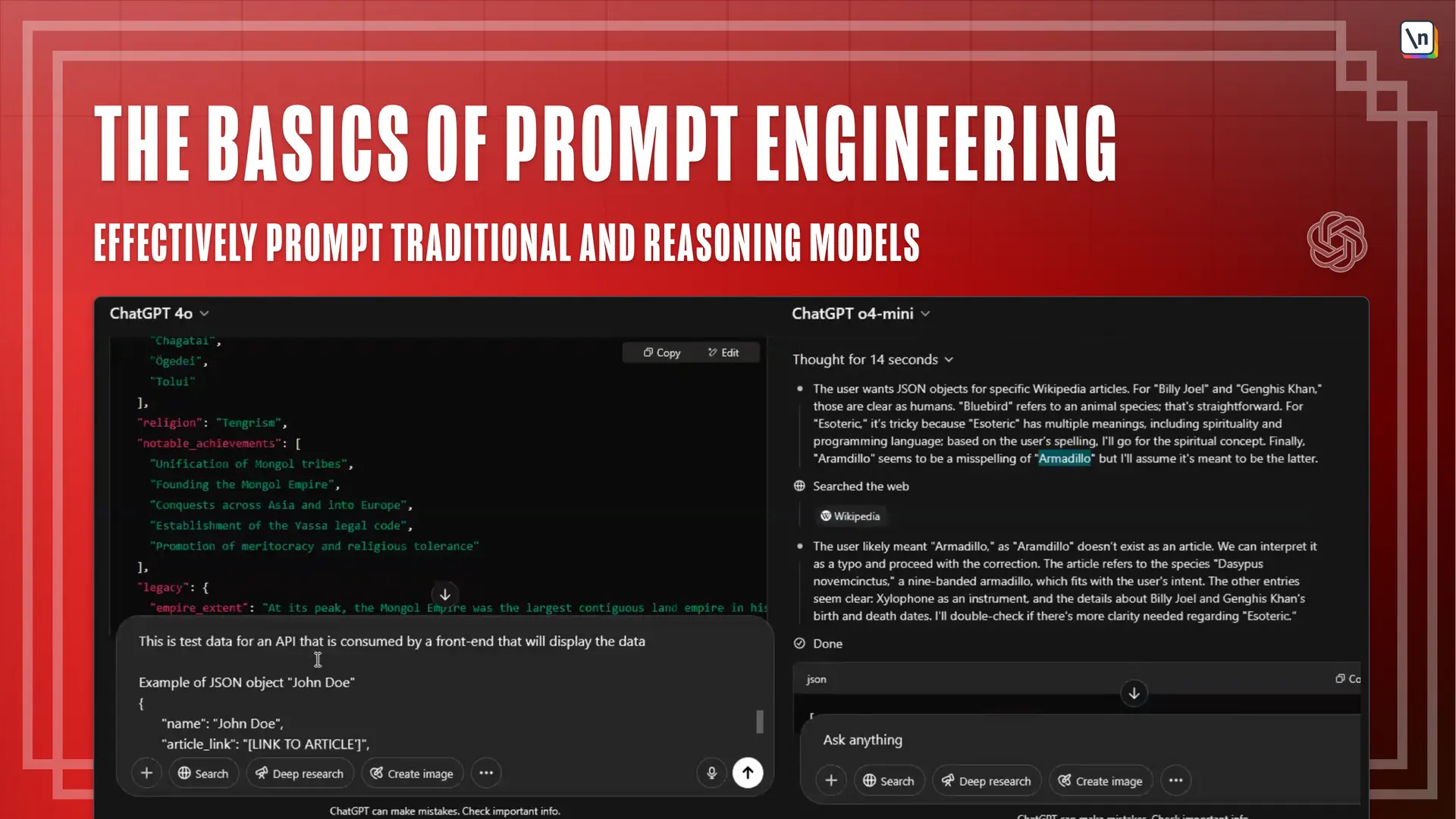What is Prompt Engineering
This lesson preview is part of the The Basics of Prompt Engineering course and can be unlocked immediately with a \newline Pro subscription or a single-time purchase. Already have access to this course? Log in here.
Get unlimited access to The Basics of Prompt Engineering, plus 90+ \newline books, guides and courses with the \newline Pro subscription.

[00:00 - 00:35] Okay, let's move on. So what is prompt engineering? You guys probably already have an idea. Generally, I figure if you ask this question to people, especially in technical spheres, there's two answers you're going to get, right? The first answer is usually that it's not actually engineering, but it's a buzzword, which honestly, it is more about communication than engineering, right? You don't need to be able to code or even to weld something to write a good prompt, right? So it is really more in the sphere of communications than the sphere of engineering.
[00:36 - 01:17] So I won't even fully disagree with people that say this, but this is a nomencl ature that's stuck around. So that's what we're calling it, because it's the easiest thing to understand communication, right? But effectively, all it is writing the right prompts to get the desired output from algorithms and other gen AI tools. So this applies to pretty much any non-deter ministic language model that you're using, right? Because when you're in that non-deter ministic space, there's a lot of room for ambiguity, there's a lot of room for error, there's hallucinations, of course. Good prompting tries to anticipate those things get you some kind of consistency in the results you're getting.